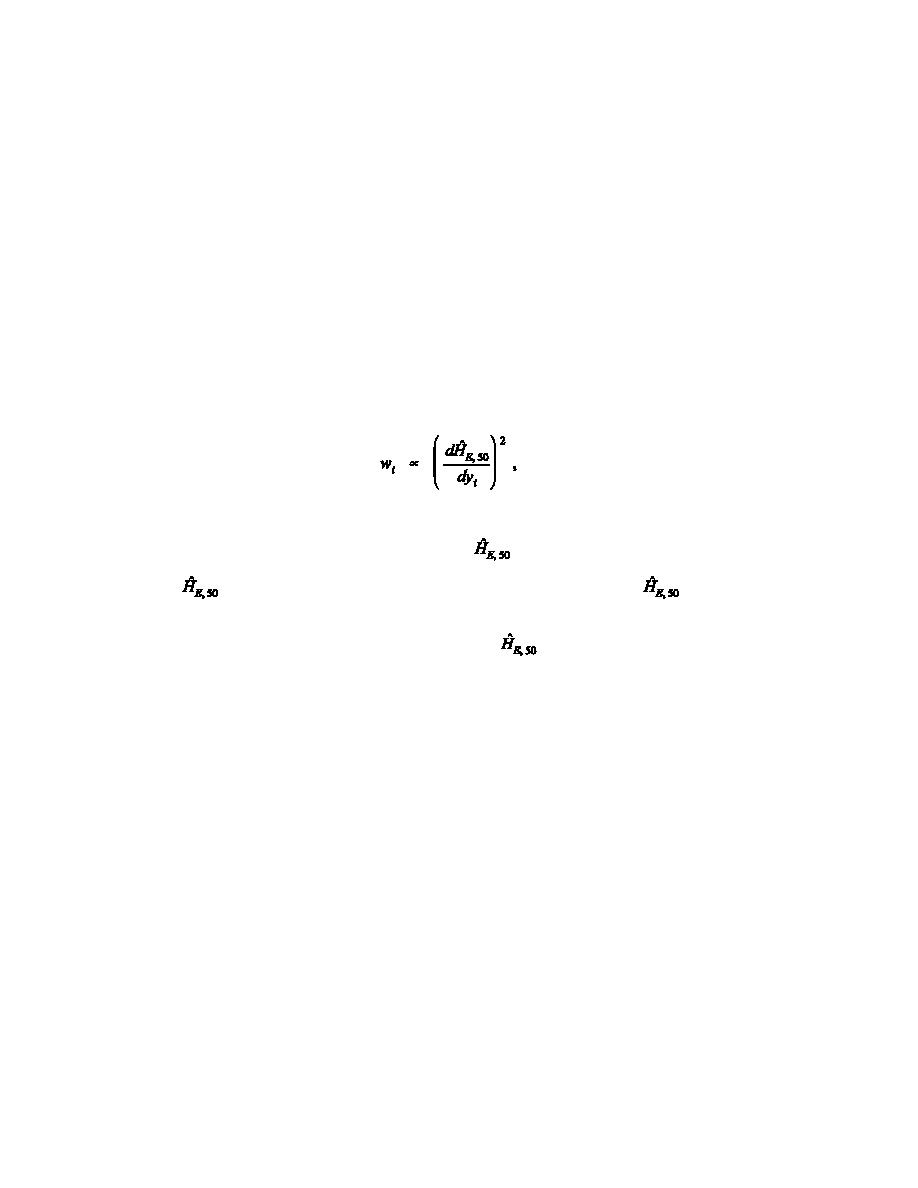 |
|||
|
|
|||
|
Page Title:
Calculation of Internal Dose From Bioassay Data |
|
||
| ||||||||||
|
|  DOE-STD-1121-98
weighting include suspected skin contamination in the case of a chest count, difficulties in the
analytical laboratory technique, suspicion of unintended or deliberate contamination of samples,
suspicion of interference from other radionuclides, interference from prior intakes, interference from
intakes of a different solubility class, differing types of analysis for similar samples (e.g., fluorimetry
vs. mass spectrometry), etc.
Minimizing sums of squares of ratios of data to prediction is essentially minimizing sums of squares
of fractional deviations (i.e., constant geometric standard deviation [GSD]). This is the method advocated
in NUREG/CR-4884 (Lessard et al. 1987) and used in CINDY (Kennedy and Strenge 1992), discussed on
the previous page.
Currently, internal dosimetrists may use an all-or-nothing subjective weighting (i.e., they ignore the
data point) based on knowledge or a hunch that a point is an outlier. In particular, current methods
provide maximum likelihood estimators of intake, rather than maximum likelihood estimators of dose.
Under this proposal,
(8)
that is, among other factors, weighting should be proportional to the square of the derivative of the
with respect to the data point yi in question.
estimated 50-year committed effective dose equivalent
If the
is simply calculated from an intake, then this leads nowhere. If
is calculated from
a time-weighted intake, Ii, then the derivative in Eq. (8) becomes proportional to the integral of the IRF
from the midpoint of the time interval ti!1 ! ti to the midpoint of the time interval ti ! ti+1. If data points
are sparse in time, then small values have a large impact on
.
7.4 CALCULATION OF INTERNAL DOSE FROM BIOASSAY DATA
A good practical summary of issues in calculation of internal dose from bioassay data is given by
Carbaugh (1994).
A comprehensive method for calculating dose equivalent from intakes of radionuclides is presented
in ICRP Publication 30 (1979). These concepts should be considered an acceptable standardized
approach for use with this performance standard even though they were developed for deriving annual
limits on intake (ALI), which are prospective limits used for the design and operation of facilities. The
ICRP concepts may be used to calculate effective dose equivalent over any time of interest to an
individual after an intake of radioactive material.
In specific cases, it may be more appropriate to apply dose assessment methods other than those
provided in ICRP Publication 30. This should be acceptable provided the dose assessment methods are
documented and justified.
DOE's 10 CFR 835 specifies the weighting factors and quality factors to be used in dose
assessments, and also discusses the remainder organs to be used in a dose assessment.
72
|
|
Privacy Statement - Press Release - Copyright Information. - Contact Us |